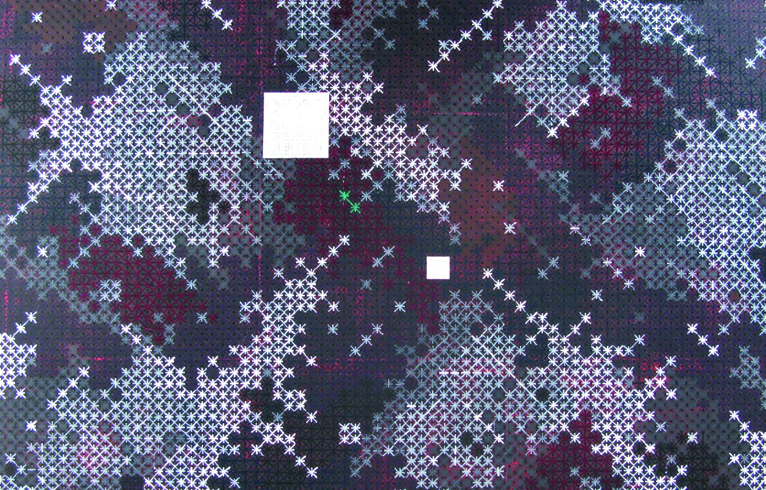ABSTRACTION IN CHINA
| January 4, 2012 | Post In LEAP 12

“Abstract art” in China has reached a new high-water mark since its popularity during the ’85 New Wave. This revival can be recognized in the growing and increasingly active groups of young artists that practice abstraction in their works, with each developing in unique directions. Correspondingly, exhibitions on “abstraction” have grown in number— as have debates, attempts to articulate a coherent purpose, and to define the phenomenon, e.g. as third wave abstraction, or post-abstraction. Of course, the economic performance of “abstract art” in art markets has also received greater attention. In galleries and auction houses, “abstraction” is being molded into a new aesthetic taste or perhaps an altogether new artistic theme.
Yet, it is curious that there are always artists who deny that what they do constitute “abstract art.” This is especially true in the case of younger artists, who willingly admit to placing focus on form and emphasizing visuality, yet refuse to be bracketed along with “abstractionists.” The primary reason for this refusal is that these artists believe even categorizing art based on its representative quotient is nothing but vulgar business classification. The final article, in this package “Farewell To An Idea: Abstract Art” can be read as art criticism’s response to this viewpoint.
Within contemporary Chinese art, there are many areas relating to “abstract art” that are worthy of discussion. Certain curators, scholars, and artists have viewed it as an effective medium for expressing and constructing contemporary cultural principles. Therefore abstraction has been linked to an awareness of traditional Chinese culture and aesthetic forms. In “The Bamboo Curtain: Three Aesthetic Conceptualizations of Abstract Art,” the young author clarifies and critiques the various viewpoints, while proposing a more tolerant principle at the article’s conclusion, one that has up to now been one of the more open-minded attitudes. Since a national, cultural establishment must be unconditionally comprehensive, it necessarily includes sociopolitical perspectives. It is clear that “abstract art” in the China of today cannot become a symbol of freethinking.
Although “Shanghai Abstract: A Paradigm of Chinese Contemporary Art” primarily acts as an introduction to the overall scene of early Shanghai abstraction, from the author’s inclusion of historical anecdotes we can grasp the progressive and liberating influence of “abstract art” on artists, both during and after the ’85 New Wave. But this surge of energy fails to find a contemporary response. Six young artists participated in dialogues on “abstraction.” Divided into four pairs, each bilateral conversation began with talk about their artistic efforts. However, once the conversation touched on the bigger themes of culture and tradition, the artists’ attitudes were similar in their avowal of not having contemplated the relationship between their private endeavors and these broader topics. Some artists even held a suspicious attitude toward art made in the name of culture or tradition. In contrast, an artist of the prior generation believes that China’s “abstract art” must find and establish its core value from cultural veins.
By this point, the observant reader has surely noticed that in this article, the term “abstract art” continually appears in quotes. We made this typographical choice for two reasons. The first is to signal that this term’s meaning is not yet definitive. The second reason is that despite definitional uncertainties, we nevertheless chose to use the better-known designation for the sake of fluency. This extra note of explanation is further evidence that “abstract art” in China is not a simple concept, nor is it to be taken lightly. Similarly, adopting a cautionary stance, the Chinese title of this feature on abstraction is literally translated as “Meaning— Appraisal,” meant to indicate the logical relationship between recognizing an idea and concluding its meaning. Sun Dongdong (Translated by JiaJing Liu)

